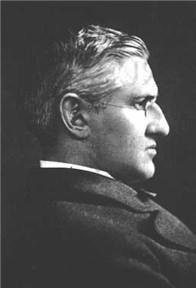
I started the play with one of my favorite devices: making the congregation a little uneasy. The worship leader got up and dropped her music so it spilled all over the floor. She muttered under her breath as she knelt down and gathered up the mess of music. Then, in a very unenthusiastic way, she asked the congregation to join her in singing “What a Friend We Have in Jesus.” The pianist started playing, but the melody was “I’m a Little Teapot.” The worship leader stopped the pianist and very impatiently told her that we were singing “What a Friend We Have in Jesus.” The pianist began to play, but she played it way too slowly. The song was allowed to go on for a few bars, and then someone from the congregation jumped up and started yelling for it to stop. He then went up front to tell the worship leader that this hymn is very important and should be sung with feeling. That’s when the meat of the play began.
Through the course of the play, the congregation learned the stories behind seven of the great hymns of the faith: “What a Friend We Have in Jesus,” “It Is Well with My Soul,” “His Eye Is on the Sparrow,” “All Hail the Power of Jesus’ Name,” “When the Roll is Called up Yonder,” “All the Way My Savior Leads Me, and “Revive Us Again.” All of the stories are inspiring in their own way, but my favorite is the one behind “It Is Well with My Soul.” I have written previously about how Christians should deal with tragedy, and I think the author of that hymn, Horatio Spafford, is a perfect model for how it should be done.
Even though this script has nine characters, we used only six people for the performance. All three female hymn writers were played by one woman, with small changes to her costume for each character. Two of the male hymn writers were played by the same person, but in fact, all four of them could be played by a single man, if he is good at memorizing lines! Please feel free to use this play in any way that you like, but I would appreciate a credit if you use it (or a part of it) in any public presentation. Even if you don’t do dramas in your church, you might want to read the stories. As I said, they are very inspiring! The script is given in the following PDF file:

Wow. Thank you for posting this, Dr. Wile! It’s really inspiring. I think ‘beautiful’ is the term. I wish I could use it for a NCFCA Open Interp (we’re required to use published literature).I think I’ll write an Original telling the stories of some well-loved hymns. 🙂
My pleasure, Miranda. When you say “published literature,” do you mean that it has to be in a book or magazine? It seems to me that since this play was performed, and I published it on my blog, it could be considered a published work. Of course, the NCFCA might have a more strict definition.
I had the same thought. Unfortunately, the rules specify that it needs to be published in book or e-book format, and I need to give a photocopied picture of the script and copyright page when registering for tournaments.
Wow, Miranda. Those are some detailed rules! I pray that you find something good!
I love the old hymns! ‘Tis so Sweet to Trust in Jesus is one of my favorites. Did Horatio Spafford also write Be Thou My Vision? That was my first thought when I saw that picture. I don’t mind the new songs, but I wish they would put them into hymnbooks. I hate trying to sing a song I don’t know just by looking at the words on a screen. I need to see the music.
We don’t know who wrote “Be Thou My Vision,” Grace, but it wasn’t Spafford. It was originally written in Irish in the sixth century, which is well before Spafford! Some attribute the words to Dallán Forgaill, a sixth-century Christian poet, but no one knows for certain.